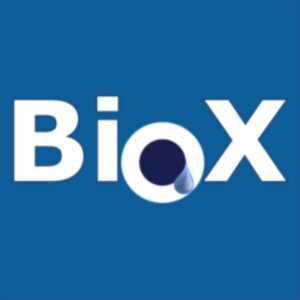Hair Water Retention and Water Content Measurement by Biox
5 January 2022
It may be said that the cosmetic importance of human hair is equalled only by that of human skin. Although nutrition and pH value affect the healthy appearance and feel of hair, as with skin, water content also plays a key role. Using the AquaFlux, a patented condenser-chamber evaporimeter, ordinarily used in research studies and claims support involving trans-epidermal water loss (TEWL), we have developed a novel, relatively inexpensive and convenient method for characterizing the ability of hair to retain water.
Healthy hair always contains a certain concentration of water, which is lost to the environment naturally through evaporation at a rate determined by its water holding capability. We recorded these hair water-desorption dynamics by continuously measuring water vapour flux density from small (<10 mm length) hair bundles placed within with the thimble-size AquaFlux measurement chamber.
The AquaFlux is the only available evaporimeter designed from the outset for both in vitro, and in vivo applications. Moreover, it is particularly suited to such studies because its isolated measurement microclimate is unperturbed by external conditions throughout the typically prolonged 1- to 2-hour hair desorption measurement times. With help from London South Bank University’s Bioengineering Research Centre, mathematical models were developed to describe the hair desorption process. By fitting normalized hair desorption data with the models, we could then find the water diffusion coefficient of each hair sample and relate that information to its water holding capability.
Figure 1 shows normalized hair desorption curves of four volunteers, denoted by letters W, P, M and B, measured with the AquaFlux. Volunteers P and B are male adults, W is a female adult, and M is a female child. The curves show that the child volunteer has the slowest desorption rate, i.e., the best water holding capability, whilst the male adult volunteer P has the least water holding capability.
Figure 1. Normalized hair desorption curves of four volunteers: adult males P and B, adult female W and female child M.
The above curves show that after preconditioning hair samples in the same relative humidity environment, contrasting moisture desorption rates, and therefore water holding capabilities, are clearly discernible within a few minutes.
The Epsilon is a capacitance-based contact imaging instrument deploying an array sensor, originally designed for biometric applications. Snapshot and video image data from each of its 76,800 pixels are linearised and calibrated. Readouts from the 13 x 15 mm sensor record both the average dielectric permittivity and sample heterogeneity, with a depth sensitivity of approximately 5 microns. Additionally, a permittivity filter software feature can exclude non-contacting areas or surface water due to sweat, for example, thus enhancing measurement sensitivity and accuracy. Another software function aligns corresponding regions of interest between images or video frames of the same sample, maximising reproducibility when analysing measurements made over days, weeks or years.
Our previous studies have demonstrated the Epsilon’s capabilities for skin hydration imaging, skin surface analysis, 3D skin surface profiles and skin micro-relief, as well as solvent penetration and diffusion dynamics. In a new study, we have found it is also capable of measuring human hair water content in vivo.
From measured values of dielectric permittivity, we can infer the near-surface water content in skin, hair and nail. Recorded images show no significant association between hair water-concentration and a subject’s age, however, water distribution in the hair of younger volunteers was more uniform. The results also show that surface-water concentration is slightly higher in nail than in hair, with skin being the highest.
This new study suggests that capacitive contact imaging is a potentially useful technique for in vivo and in vitro hair water content measurement. Compared to other techniques, the Epsilon has advantages of rapid visualisation/inspection, high sensitivity, accuracy, and reproducibility.
Read the entire FOCUS#4: Click here
Tel/Fax: +44 (0)845 8622129
Biox Systems Ltd
Technopark Building
90 London Road
London SE1 6LN
England









 Follow us on Linkedin!
Follow us on Linkedin!
You must be logged in to post a comment.